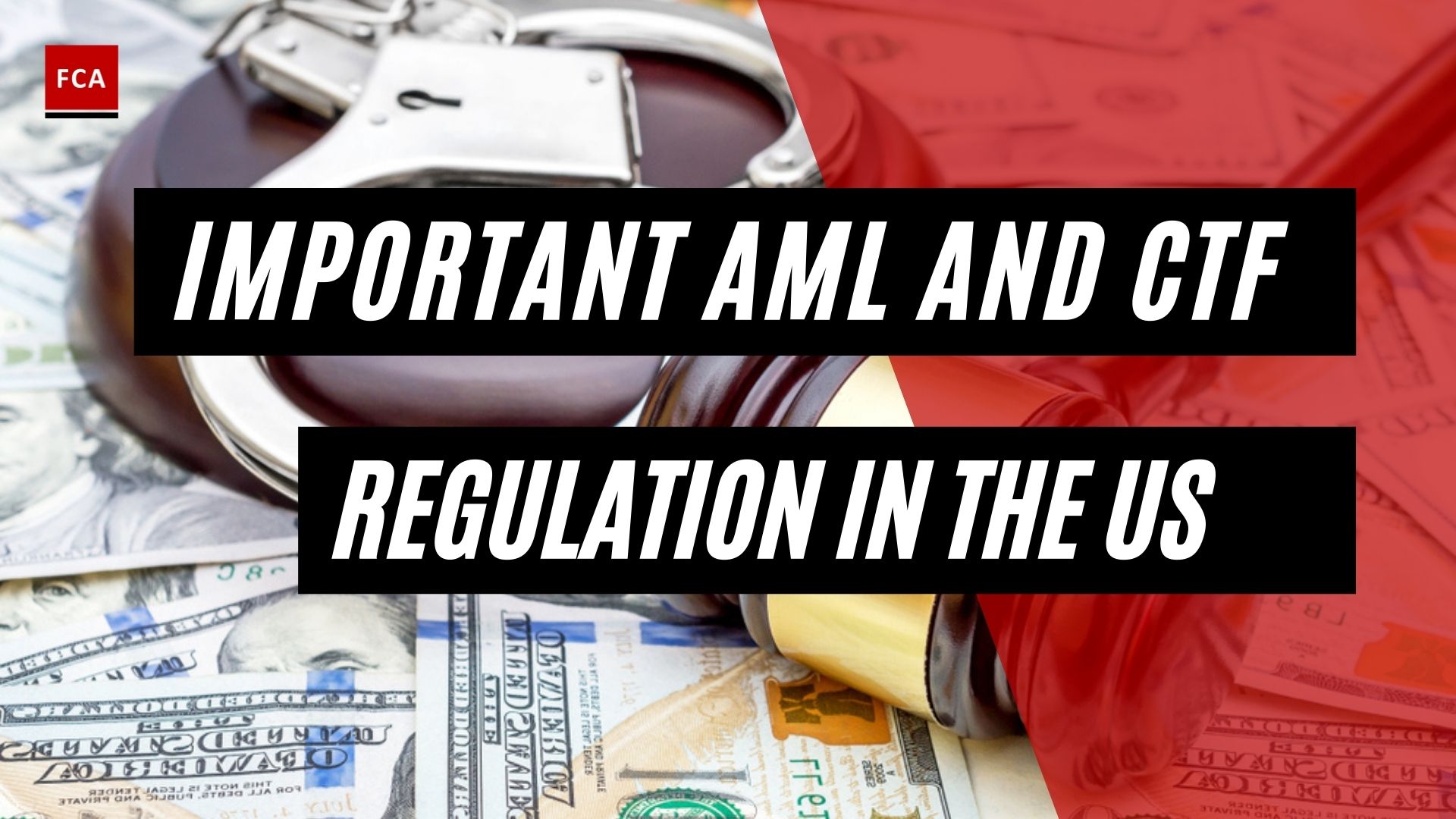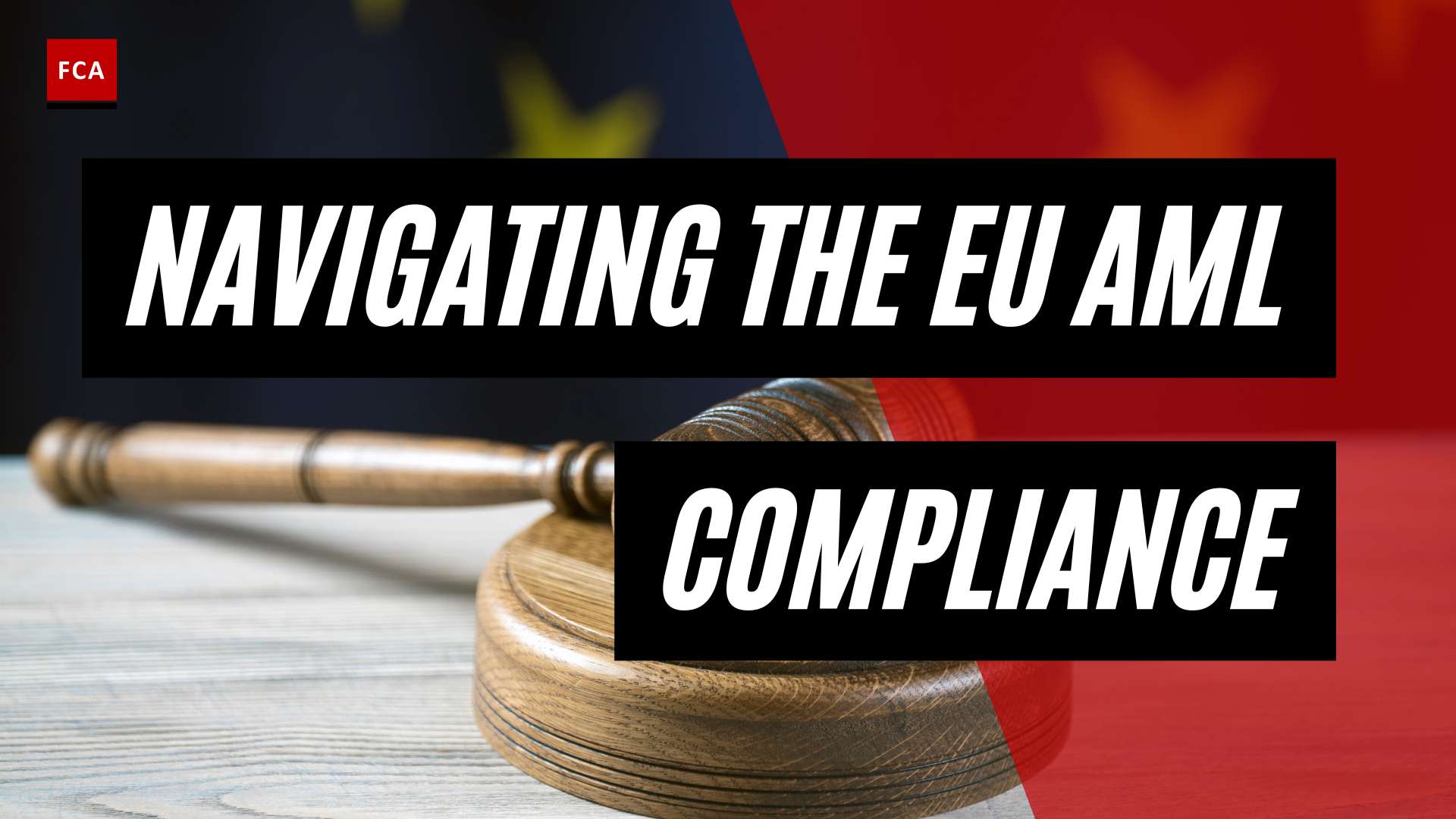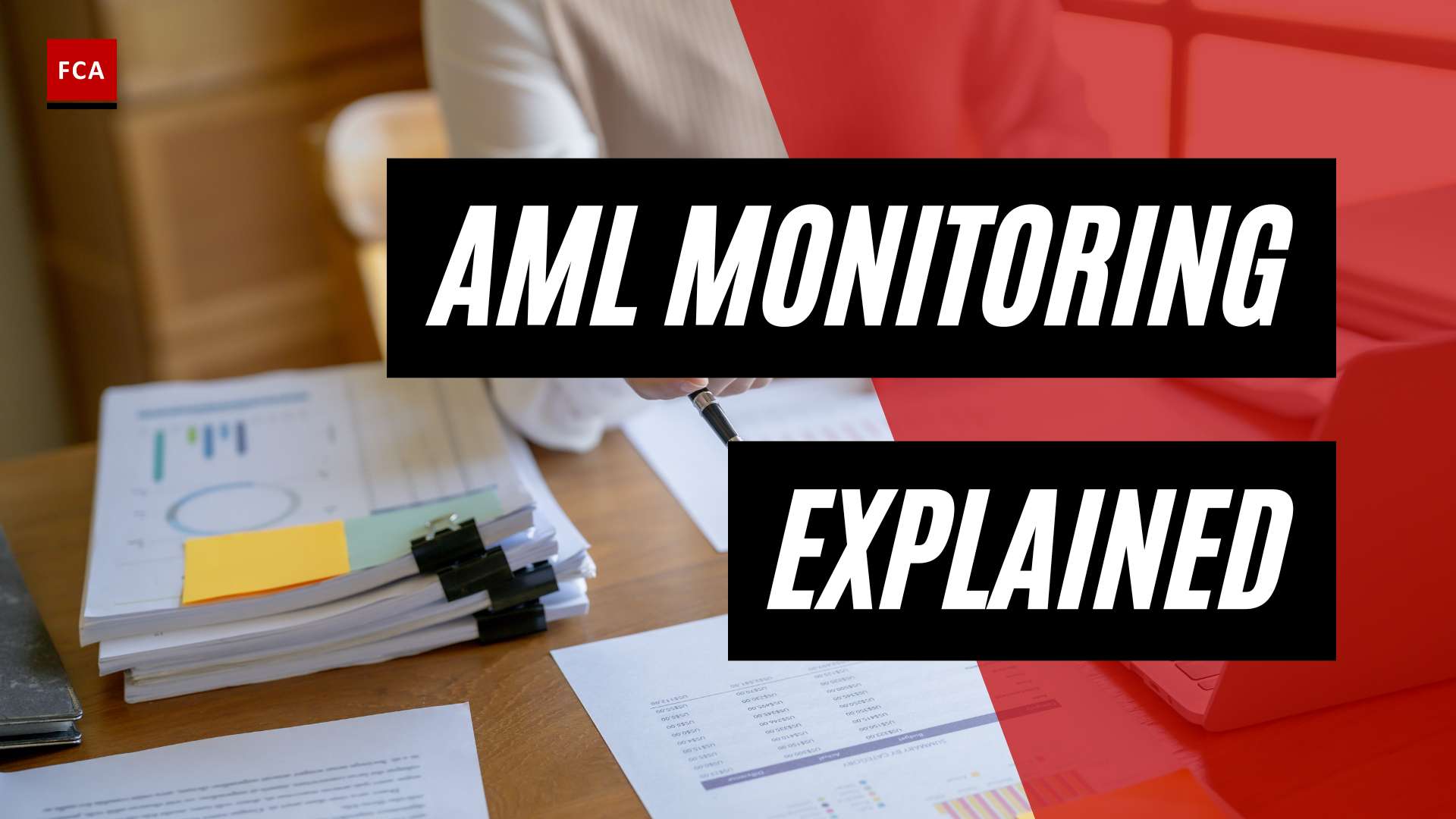Starting a Career in AML
Entering the world of Anti-Money Laundering (AML) compliance can be an exciting and rewarding career choice. The importance of AML compliance cannot be overstated, as it plays a crucial role in safeguarding the integrity of the financial system and preventing illicit activities. Professionals working in compliance, risk management, anti-money laundering, and anti-financial crime are well-positioned to pursue a career in AML.
The Importance of AML Compliance
AML compliance is essential in the fight against financial crimes such as money laundering, terrorist financing, and fraud. AML compliance officers are responsible for developing and implementing AML programs to ensure that businesses comply with regulatory requirements and effectively detect and prevent illicit financial activities.
The role of an AML compliance officer goes beyond mere rule-following. It requires a deep understanding of financial regulations, risk management, customer due diligence, and fraud detection. By staying informed about emerging trends in financial crimes, AML compliance officers help protect organizations from reputational damage, legal repercussions, and financial losses.
The significance of engaging and listening cannot be undermined in the AML field. Angela Salter emphasizes the importance of identifying one’s potential in the AML field, which can lead to a successful and fulfilling career. By continually honing their skills and keeping up with industry developments, AML compliance professionals contribute to the overall integrity and security of the financial system.
A Growing Field with High Demand
The demand for AML professionals is on the rise, fueled by increasing regulatory requirements and the need for robust financial crime prevention measures. The U.S. Department of Labor projects a 19% growth in employment for compliance officers from 2020 to 2030, a rate faster than the average for all other occupations. This growth indicates the expanding opportunities available in the field of AML compliance.
AML compliance officers can find career opportunities in various industries, including financial institutions, insurance companies, and businesses dealing with a high volume of financial transactions. As the financial landscape evolves, so does the demand for skilled professionals who can navigate the complex regulatory environment and mitigate financial risk (Alessa).
To succeed in an AML compliance career, professionals should possess a range of skills. Attention to detail, analytical thinking, and knowledge of AML laws and regulations are crucial. Effective communication skills are also essential for collaborating with stakeholders, conducting investigations, and reporting suspicious activities. By continually developing these skills, AML compliance officers can enhance their career progression and job prospects.
Starting a career in AML compliance offers individuals the opportunity to contribute to the global fight against financial crimes. By staying informed, developing essential skills, and pursuing relevant certifications, professionals can position themselves for success in this dynamic and high-demand field.
Roles and Responsibilities of an AML Compliance Officer
Within the field of anti-money laundering (AML) compliance, professionals assume the critical role of AML compliance officers. These professionals are responsible for various key responsibilities, including developing and implementing AML programs, ensuring compliance with regulations, and investigating and reporting suspicious activities.
Developing and Implementing AML Programs
As an AML compliance officer, one of the primary responsibilities is to develop and implement AML programs within financial institutions. This involves creating policies, procedures, and controls to prevent money laundering and other financial crimes. AML programs are designed to identify, assess, and mitigate the risks associated with money laundering and the financing of terrorism.
These programs encompass a range of activities, including customer due diligence, transaction monitoring, and reporting suspicious activities. AML compliance officers work closely with other departments, such as risk management and legal, to establish effective AML frameworks tailored to the specific needs of the organization.
Ensuring Compliance with Regulations
Another crucial role of an AML compliance officer is to ensure that financial institutions comply with AML laws and regulations. They must stay up-to-date with the ever-evolving regulatory landscape and ensure that the organization adheres to the latest AML requirements.
AML compliance officers oversee the implementation of compliance measures, such as conducting customer due diligence, verifying the source of funds, and monitoring transactions for suspicious activities. They work closely with internal teams to provide guidance and training on AML policies and procedures, fostering a culture of compliance within the organization.
Investigating and Reporting Suspicious Activities
AML compliance officers are responsible for investigating and reporting suspicious activities to the appropriate authorities. They analyze transactional data, conduct investigations, and utilize sophisticated tools and technologies to detect potential money laundering or other illicit activities.
When suspicious activities are identified, AML compliance officers are responsible for preparing and filing suspicious activity reports (SARs) to the relevant regulatory bodies. These reports provide detailed information about the suspicious activities, enabling law enforcement agencies to further investigate and combat financial crimes.
By diligently fulfilling these roles and responsibilities, AML compliance officers contribute to the overall efforts in combating money laundering, terrorist financing, and other financial crimes.
To excel in this career, AML compliance officers require a combination of skills, qualifications, and industry knowledge. Attention to detail, analytical thinking, knowledge of AML laws and regulations, and effective communication skills are all essential attributes for success in this role. AML compliance officers play a vital role in safeguarding the integrity of the financial system and protecting institutions from the risks associated with money laundering and financial crime.
Skills and Qualifications for AML Compliance Officers
To thrive as an AML compliance officer, individuals must possess a specific set of skills and qualifications. These skills enable them to effectively navigate the complex landscape of anti-money laundering (AML) regulations and contribute to the prevention of financial crimes such as money laundering and terrorist financing.
Attention to Detail and Analytical Thinking
Attention to detail is a critical skill for AML compliance officers. They must meticulously review financial transactions, customer records, and other relevant data to identify any suspicious activities or potential red flags. Being detail-oriented allows compliance officers to detect patterns, anomalies, and inconsistencies that may indicate illicit financial behavior.
Analytical thinking is equally important in the field of AML compliance. Compliance officers must possess the ability to analyze vast amounts of data, identify trends, and draw meaningful insights. This skill enables them to make informed decisions and take appropriate actions to mitigate AML risks.
Knowledge of AML Laws and Regulations
A deep understanding of AML laws and regulations is essential for AML compliance officers. They need to stay up-to-date with evolving regulatory requirements and ensure that their organizations are fully compliant. A comprehensive knowledge of AML laws enables compliance officers to develop and implement effective AML programs, conduct thorough investigations, and report suspicious activities to the relevant authorities.
Familiarity with financial regulations, risk management, customer due diligence, and fraud detection is crucial for AML compliance officers. They must possess a solid foundation in these areas to effectively carry out their responsibilities.
Effective Communication Skills
Strong communication skills are vital for AML compliance officers. They must be able to communicate effectively with various stakeholders, including internal teams, senior management, regulatory bodies, and law enforcement agencies. AML compliance officers need to convey complex AML concepts, regulations, and requirements in a clear and concise manner.
Additionally, they must collaborate with other departments within the organization to ensure the implementation of AML controls and procedures. Effective communication skills enable compliance officers to educate colleagues, provide guidance, and foster a culture of compliance throughout the organization.
By possessing attention to detail, analytical thinking, knowledge of AML laws and regulations, and effective communication skills, AML compliance officers are equipped to make informed decisions, detect and prevent financial crimes, and contribute to a robust AML framework within their organizations. These skills, along with continuous professional development and industry certifications, allow AML compliance officers to excel in their careers and make a significant impact in the fight against money laundering and other financial crimes.
Career Opportunities and Salary in AML Compliance
The field of Anti-Money Laundering (AML) offers promising career opportunities for professionals looking to make a difference in financial crime prevention. With the increasing focus on regulatory compliance, the demand for AML compliance officers is on the rise. This section explores the job growth and industry demand, as well as average salaries and factors influencing compensation for AML compliance officers.
Job Growth and Industry Demand
The demand for AML professionals is increasing, with the U.S. Department of Labor projecting a 19% growth in employment for compliance officers from 2020 to 2030. This growth rate is faster than the average for all other occupations. As governments and businesses continue to strengthen their efforts to combat money laundering and financial crimes, the need for skilled AML compliance officers is expected to remain high.
The surge in demand for AML professionals can be attributed to several factors, including stricter regulations, heightened scrutiny from regulatory bodies, and increasing instances of money laundering and fraud. Financial institutions, such as banks, credit unions, and investment firms, are actively seeking qualified individuals to ensure compliance with AML laws and regulations.
Average Salaries and Factors Influencing Compensation
The average annual salary for an AML compliance officer in the United States is $70,000, with a range from $60,000 to $82,000, depending on the geographical location and level of experience. However, it’s important to note that salaries can vary significantly based on factors such as industry, organization size, years of experience, and level of expertise.
Career growth opportunities for AML compliance officers include roles such as AML director, AML manager, Chief Compliance Officer (CCO), and Director of Compliance, with average salaries ranging from $50,000 to over $200,000 per year depending on experience and expertise. Additionally, professionals who pursue advanced certifications and demonstrate a strong track record in AML compliance may have access to higher-paying positions.
Factors that can influence compensation include the complexity of the role, the level of responsibility, the geographic location of the job, and the industry sector. Financial institutions based in major cities or high-risk jurisdictions may offer higher salaries to attract top talent. Furthermore, individuals with specialized knowledge in areas such as cryptocurrency, international transactions, or emerging technologies may command higher compensation due to their unique skill sets.
It’s worth noting that the demand for AML professionals surged by 64% over the last three years, with AML compliance officers being particularly sought after. This increasing demand, coupled with ongoing regulatory developments, underscores the importance of a career in AML compliance and the potential for growth and advancement within the field.
As the AML landscape continues to evolve, professionals who stay abreast of industry trends, maintain relevant certifications, and possess a strong understanding of AML laws and regulations will be well-positioned to capitalize on the expanding career opportunities in this dynamic field.
Certification and Professional Development in AML Compliance
To build a successful career as an Anti-Money Laundering (AML) Compliance Officer, obtaining relevant certifications and continuously investing in professional development is crucial. AML compliance officers play a vital role in preventing financial crimes such as money laundering and terrorist financing, and their expertise is highly sought after in various industries, including banking, financial services, insurance, and government agencies.
Importance of AML Certifications
Employers often require AML professionals to hold certifications to demonstrate their expertise in AML practices.
Obtaining AML certifications offers several benefits for compliance officers. Firstly, certifications provide a strong foundation in financial regulations, risk management, customer due diligence, and fraud detection. This knowledge is essential for understanding and implementing AML programs and ensuring compliance with relevant laws and regulations.
Secondly, certifications enhance career progression and job prospects. Employers value certified professionals as they demonstrate a commitment to excellence and staying updated with industry best practices. Holding certifications can open doors to leadership roles, higher salaries, and increased job security within the AML compliance field (Indeed).
Enhancing Career Progression and Job Prospects
By pursuing AML certifications, compliance officers can position themselves for long-term success. These certifications not only validate their expertise but also provide networking opportunities with other professionals in the field. Sharing insights and experiences with peers can contribute to professional growth and expand career opportunities.
Furthermore, AML certifications can facilitate career transitions within the compliance field. The skills and knowledge gained through certification are transferable across different sectors, enabling professionals to explore diverse career paths. Compliance officers can advance their careers by moving into specialized roles such as AML analysts, investigators, or consultants.
To stay competitive and up-to-date in the evolving AML landscape, continuous professional development is essential. Compliance officers should actively seek out industry conferences, seminars, and workshops to expand their knowledge and stay informed about emerging trends and regulatory changes. Engaging in ongoing education and training demonstrates a commitment to professional growth and ensures compliance officers remain at the forefront of the AML field.
In summary, AML certifications are vital for AML compliance officers looking to advance their careers. These certifications validate expertise in AML practices, enhance job prospects, and provide opportunities for career progression. By continuously investing in professional development and staying updated with industry trends, compliance officers can excel in their roles and contribute effectively to the fight against financial crimes.
Challenges in AML Compliance
While the role of an AML compliance officer is crucial in combating money laundering and financial crimes, there are several challenges they face in fulfilling their responsibilities. These challenges include the lack of cooperation and information sharing, data and technology resource limitations, and cross-border and multi-jurisdictional standards.
Lack of Cooperation and Information Sharing
A significant challenge in AML compliance is the lack of cooperation and information sharing between financial institutions and regulatory authorities. Financial institutions may be hesitant to share information due to concerns about legal liability and reputational risks, while regulatory authorities may lack resources or expertise for effective analysis. This lack of collaboration and transparency hinders the ability to detect and prevent money laundering activities effectively. Encouraging a culture of cooperation and establishing mechanisms for information sharing are essential steps in addressing this challenge (Sanction Scanner).
Data and Technology Resource Limitations
Financial institutions often face limitations in terms of data and technology resources when it comes to AML compliance. Inadequate access to customer, transaction, or third-party data, and insufficient analytics tools can make it challenging to effectively detect and prevent money laundering activities. Small and medium-sized companies, in particular, may struggle with a shortage of compliance officers, teams, and resources. Investing in robust data management systems, advanced analytics tools, and allocating sufficient resources are necessary to overcome these limitations and enhance AML compliance efforts.
Cross-Border and Multi-Jurisdictional Standards
Managing cross-border and multi-jurisdictional standards is another significant challenge in AML compliance. Financial institutions are required to comply with different regulations in various jurisdictions, making it complex and time-consuming to ensure adherence to all applicable laws. Increased customer diligence, such as gathering more customer information and identifying beneficial owners, adds to the resource-intensive nature of compliance efforts. Staying updated with evolving regulations and establishing robust processes to manage cross-border compliance are crucial in addressing this challenge effectively (Sanction Scanner).
As AML compliance continues to be a critical focus area for financial institutions and regulatory authorities, addressing these challenges is vital to ensure the effectiveness of AML programs. Collaboration, investment in data and technology resources, and staying abreast of cross-border regulations will help AML compliance officers navigate these challenges and contribute to a stronger defense against money laundering and financial crimes.
Embracing Technology in AML Compliance
As the field of anti-money laundering (AML) compliance continues to evolve, the role of technology has become increasingly important in ensuring effective detection and prevention of financial crimes. Embracing technology in AML compliance can bring numerous benefits to both financial institutions and AML compliance officers. This section will explore the role of technology in AML compliance and the benefits that technology solutions offer.
Role of Technology in AML Compliance
The adoption of technology, such as AI and machine learning, has significantly enhanced the capabilities of AML compliance officers to detect and prevent money laundering activities more effectively (Tookitaki). Technology plays a crucial role in swiftly identifying potential risks and suspicious activities, surpassing the capabilities of manual methods. Advanced technology solutions enhance data quality, reduce false positives, and improve compliance outcomes.
Financial institutions leverage technology-driven solutions to combat money laundering effectively. Automated Know Your Customer (KYC) and Customer Due Diligence (CDD) tools, powered by artificial intelligence, enable the verification of customer identities, including Politically Exposed Persons (PEPs). Transaction Monitoring solutions allow real-time monitoring of customer transactions, flagging suspicious activities for review by compliance teams.
By embracing technology, AML compliance officers can streamline their processes, improve accuracy, and enhance their ability to detect and prevent money laundering activities. Technology solutions provide a competitive advantage and help organizations keep pace with regulatory changes in the increasingly complex financial landscape.
Benefits of Technology Solutions
The use of technology solutions in AML compliance offers several benefits to financial institutions and AML compliance officers. Some of the key advantages include:
- Efficiency: Technology automates manual processes, reducing the time and effort required for compliance tasks. This allows AML compliance officers to focus on higher-value activities, such as investigating and analyzing suspicious activities.
- Risk Reduction: Advanced technology solutions enhance data quality and accuracy, reducing the risk of false positives and false negatives. By leveraging technology, AML compliance officers can better identify potential risks and suspicious activities, enabling proactive measures to mitigate money laundering risks.
- Real-Time Monitoring: Technology solutions enable real-time monitoring of customer transactions, allowing for the timely detection of suspicious activities. This helps financial institutions take immediate action to prevent money laundering activities and comply with regulatory requirements.
- Scalability and Flexibility: Technology solutions can easily scale to accommodate the growing volume of transactions and regulatory demands. They offer flexibility in adapting to changing regulatory requirements and evolving money laundering techniques.
- Data Analysis: Technology solutions utilize advanced analytics and machine learning algorithms to analyze large volumes of data quickly. This enables AML compliance officers to identify patterns, trends, and anomalies that may indicate potential money laundering activities.
By embracing technology in AML compliance processes, financial institutions and AML compliance officers can enhance their ability to detect and prevent money laundering activities. The benefits of technology solutions include increased efficiency, reduced risk, real-time monitoring, scalability, flexibility, and advanced data analysis capabilities.
In the ever-changing landscape of financial crimes, leveraging technology solutions is essential for AML compliance officers to stay ahead of emerging risks and regulatory requirements. By harnessing the power of technology, AML compliance officers can effectively fulfill their role in combating money laundering and ensuring a safer financial environment.
Evolution of AML Regulations
As the fight against money laundering and terrorist financing has intensified, the landscape of Anti-Money Laundering (AML) regulations has evolved over time. Understanding the history and evolution of AML regulations is crucial for AML compliance officers to navigate the complex regulatory environment.
History of AML Regulations
The history of AML regulations dates back to July 1989, with the establishment of the Financial Action Task Force (FATF) in Paris. The FATF was founded to counter money laundering and promote international AML standards. Initially, the focus was on combating money laundering activities. However, following the devastating 9/11 attacks in 2001, the FATF expanded its mission to include the fight against terrorist financing. This led to a significant enhancement of existing AML regulations and the introduction of new measures to prevent the financing of terrorism (Sanction Scanner).
In the European Union, the first Anti-Money Laundering Directive was introduced in 1990 to prevent the financial system from being misused for money laundering. Since then, the EU’s AML directives have undergone several revisions to adapt to emerging risks associated with money laundering and terrorist financing. The sixth Anti-Money Laundering Regulation is currently being prepared for compliance by EU member states (Sanction Scanner).
In the United States, the Financial Crimes Enforcement Network (FinCEN) was established in 1970 to administer the Bank Secrecy Act (BSA), a crucial tool in the fight against money laundering. Over time, the U.S. has modified the BSA to equip various regulatory agencies with effective tools for AML. Technological advancements and the big data revolution have further emphasized the importance of AML software solutions in combating financial crimes (Sanction Scanner).
Evolving AML Standards
AML regulations continue to evolve to keep pace with the changing nature of financial crimes and advancements in technology. Financial criminals have access to state-of-the-art technology and ample funding, making it increasingly challenging for financial institutions, law enforcement agencies, and regulators to combat money laundering. Criminals manipulate identities and carry out illegal transactions with ease, necessitating the use of AML software solutions by companies to detect and prevent these activities.
The adoption of technology, such as artificial intelligence (AI) and machine learning, has enhanced the capabilities of AML compliance officers to detect and prevent money laundering activities more effectively. These technologies enable the analysis of vast amounts of data, identification of patterns, and detection of suspicious transactions. The use of advanced analytics and automation has revolutionized the AML landscape, leading to a higher demand for professionals in this field.
As AML regulations continue to evolve, compliance officers play a crucial role in staying updated with the latest regulatory changes and ensuring that their organizations adhere to the highest standards of AML compliance. By understanding the history and evolution of AML regulations, compliance officers can effectively navigate the complex regulatory landscape and contribute to the ongoing fight against financial crime.
Technology Solutions in AML Compliance
As the field of anti-money laundering (AML) compliance continues to evolve, the adoption of technology has become essential for enhancing AML efforts. Leveraging technology solutions allows AML professionals to effectively detect and prevent money laundering activities, surpassing the capabilities of manual methods. In this section, we will explore some key technology solutions used in AML compliance: leveraging technology for enhanced AML efforts, automated KYC and CDD tools, and transaction monitoring solutions.
Leveraging Technology for Enhanced AML Efforts
The integration of technology, such as artificial intelligence (AI) and machine learning, has significantly enhanced the capabilities of AML compliance officers in detecting and preventing money laundering activities (Tookitaki). Advanced technology solutions have the potential to improve data quality, reduce false positives, and enhance compliance outcomes in the fight against money laundering.
By leveraging technology, financial institutions and compliance teams can swiftly identify potential risks and suspicious activities, surpassing the capabilities of manual methods. Technology-driven solutions provide real-time monitoring, analysis, and reporting, enabling AML professionals to stay ahead of evolving money laundering schemes.
Automated KYC and CDD Tools
Know Your Customer (KYC) and Customer Due Diligence (CDD) processes are critical components of AML compliance. Automated KYC and CDD tools, powered by AI and machine learning, streamline the verification of customer identities, including Politically Exposed Persons (PEPs). These tools can efficiently collect, authenticate, and analyze customer data, reducing the time and effort required for manual verification processes.
Automated KYC and CDD tools not only enhance the efficiency of compliance processes but also improve accuracy by reducing human errors. These solutions enable AML professionals to identify and assess potential risks associated with customers more effectively. By automating these processes, financial institutions can ensure regulatory compliance while mitigating the risk of facilitating money laundering activities.
Transaction Monitoring Solutions
Transaction monitoring is a crucial aspect of AML compliance, as it involves the detection and analysis of suspicious financial activities. Technology solutions for transaction monitoring enable real-time monitoring of customer transactions, flagging potentially suspicious activities for review by compliance teams.
Advanced transaction monitoring systems utilize AI and machine learning algorithms to analyze vast amounts of transactional data. These systems can identify patterns, anomalies, and potential red flags indicative of money laundering. By automating this process, financial institutions can efficiently review and investigate suspicious transactions, ensuring compliance with AML regulations and assisting in the prevention of money laundering activities.
By embracing technology solutions in AML compliance, organizations can enhance efficiency, reduce risks, and keep pace with regulatory changes in the increasingly complex financial landscape. These solutions provide a competitive advantage, ensuring the accuracy and timeliness of compliance efforts. However, it’s important for AML professionals to stay updated on the latest advancements and best practices in technology-driven AML compliance to effectively combat money laundering activities.
For more information on AML career opportunities, qualifications, and industry certifications, visit our articles on aml career opportunities, aml career qualifications, and aml industry certifications.








